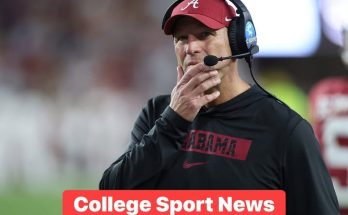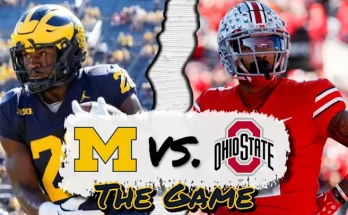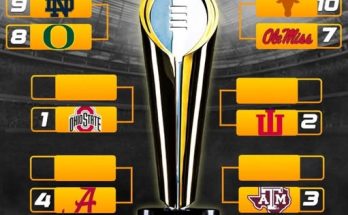In the ever-shifting landscape of college basketball, roster changes, decommitments, and transfers have become the norm rather than the exception. The era of name, image, and likeness (NIL) deals, transfer portals, and evolving eligibility rules has reshaped the college basketball experience, both for players and programs. Against that backdrop, the news of a former Duke basketball signee now visiting a nearby Atlantic Coast Conference (ACC) school has sparked curiosity and speculation across the sport’s passionate fanbase.
The player in question, a once-celebrated high school prospect, had committed to Duke with much fanfare. A consensus four-star talent and top-50 recruit nationally, he was widely viewed as a future contributor in Jon Scheyer’s system—someone with the versatility, length, and skill set to thrive in Duke’s uptempo, spacing-driven offense. But as quickly as he entered the fold, he also departed. Just weeks after signing his National Letter of Intent, the player formally requested and was granted a release from his commitment to Duke. No official reason was given at the time, leaving fans and media alike to speculate about the circumstances behind the abrupt change.
Now, his recent visit to an in-conference rival has turned heads. The former Duke signee made an official trip to NC State this week, spending two days on campus with the Wolfpack coaching staff and players. The move signals serious interest in staying close to home—both geographically and competitively—while also raising the stakes within the ACC recruiting chessboard. NC State, under head coach Kevin Keatts, has shown a renewed focus on acquiring proven talent with high ceilings, especially those with prior ties to the region. Landing a former Duke signee would be not only a talent boost, but a symbolic win as well.
According to sources close to the situation, the visit was described as “productive and promising.” The player toured NC State’s basketball facilities, sat in on film sessions, and participated in informal workouts. He was also seen courtside during the Wolfpack’s recent team scrimmage, mingling with staff and players. Keatts and his assistants reportedly emphasized the opportunity for immediate impact, pointing to the team’s current roster construction and the potential for early playing time. The pitch centered around a development-first approach, with the freedom to showcase skills in a guard-oriented system that values transition play and defensive flexibility.
For the player, the visit represents more than just a recruitment tour—it’s a chance to reset his trajectory. Decommitting from a blue-blood like Duke isn’t a decision made lightly. Whether it stemmed from fit concerns, academic preferences, or deeper personal considerations, the choice has real consequences. Yet, the ACC’s interconnected nature means that opportunities for second chances abound. NC State, with its strong basketball history and passionate fanbase, provides a platform that is simultaneously competitive and supportive. The university’s recent push to re-establish itself as a top-tier program adds weight to the recruitment, making it clear this isn’t a consolation destination—it’s a viable alternative.
The optics of the situation also carry implications for Duke. While the Blue Devils continue to maintain a top-ranked recruiting class, losing a signed prospect to a nearby rival does offer a moment of reflection. Jon Scheyer, still early in his head coaching career, has already shown the ability to bring in elite talent year after year. But roster stability is elusive in today’s climate. Scheyer will undoubtedly move forward, focusing on those who remain committed and preparing for the incoming class, which still includes multiple five-star names. Yet the decommitment—especially if it leads to an intra-conference transfer—highlights the ongoing need for adaptability, communication, and alignment between staff and players from day one.
On the NC State side, there’s reason for optimism. While not yet official, momentum appears to be building. The coaching staff has remained tight-lipped, but insiders note that the visit exceeded expectations and that a commitment could be imminent. Adding a player with experience in a blue-blood system—even if he never suited up in a game—carries value. The habits, preparation, and intensity required at a program like Duke are often transferrable. If Keatts can channel that foundation and integrate it into the Wolfpack’s structure, it could lead to an on-court advantage.
Recruiting battles within the ACC are nothing new, but this one feels different. It’s not a traditional high school-to-college recruitment. It’s a case study in how the transfer portal and NIL have blurred the lines between commitment and flexibility. Players now have more control than ever over their careers. A signed letter doesn’t necessarily mean a player will ever take the court in that jersey. And while that may frustrate traditionalists, it also reflects a broader shift in college sports toward player empowerment.
The fan reactions have been predictably divided. Duke loyalists, already accustomed to high roster turnover in the one-and-done era, have mostly taken the news in stride, albeit with a tinge of irritation that a former signee could end up just 30 minutes down the road. NC State fans, meanwhile, are energized by the possibility of landing a former Blue Devil. Social media has lit up with speculation, mock lineups, and spirited debates about how the player would fit into the Wolfpack’s evolving system. Some have even joked that Keatts has become a “Duke defector recruiter,” referencing past instances of targeting Durham-area players.
Still, it’s important to remember that for the player, this isn’t about optics. It’s about fit, development, and the opportunity to grow both on and off the court. While proximity may play a role—being near family, remaining in familiar surroundings—it ultimately comes down to where he feels he can thrive. NC State is making a strong case that it can be that place. Whether that pitch proves successful remains to be seen, but the early signs are encouraging.
The situation also offers a lesson in modern recruiting. Programs must not only identify talent but also build relationships that can withstand the volatility of today’s college basketball environment. From NIL negotiations to academic alignment and personal development, the margin for error has never been thinner. One miscommunication or overlooked detail can shift a player’s entire future. For coaching staffs, that means being proactive, empathetic, and transparent from the first phone call to the final handshake.
Meanwhile, the broader ACC picture continues to evolve. With traditional powers like Duke and North Carolina facing new challenges from upstarts like Miami and Virginia Tech, the middle tier of the conference has more opportunity than ever. A well-timed addition—especially one who was once bound for a rival—could tip the balance in unexpected ways. For NC State, the chance to add a player of this caliber could help solidify their upward trajectory and signal to future recruits that Raleigh is a legitimate destination for high-level basketball.
As for the player himself, he remains focused on the future. Those close to him describe him as driven, introspective, and hungry to prove that he belongs. The Duke chapter may be closed, but the story is far from over. If his visit to NC State turns into a commitment, it could mark the start of a compelling new arc—one filled with motivation, rivalries, and the kind of second chances that define college basketball’s modern era.
Whether or not the former Duke signee ultimately ends up in Raleigh, one thing is certain: his next move will be watched closely, both by those who once expected him to wear Duke blue and those now hoping he’ll don NC State red. In a sport fueled by emotion, rivalry, and redemption, this storyline has all the ingredients for something memorable.



